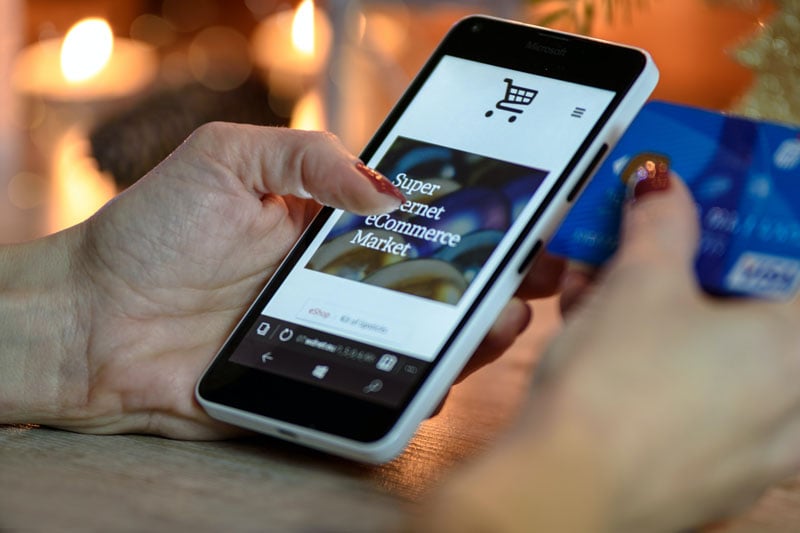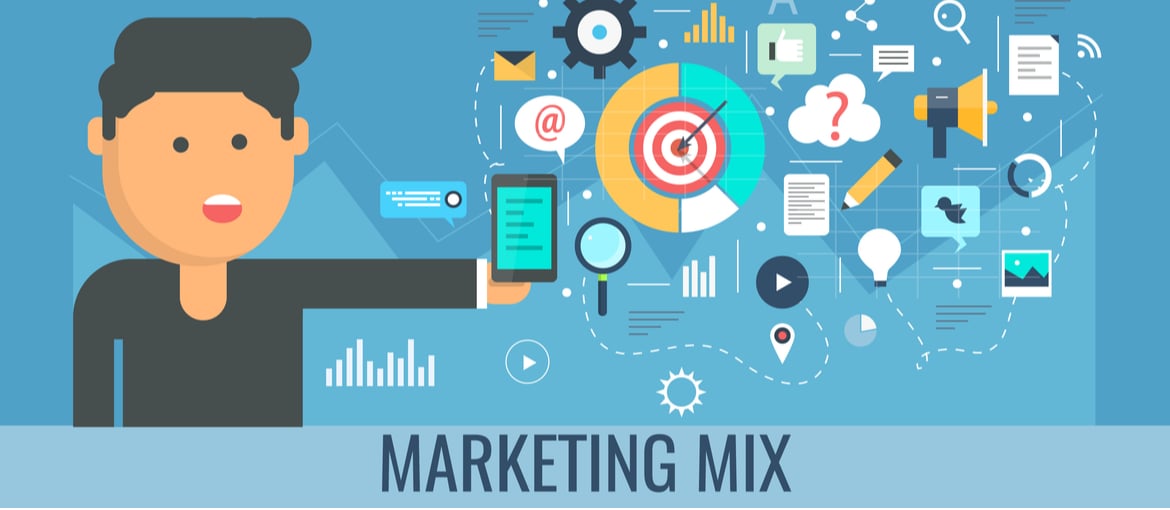Table of Contents
The modern marketing mix: from the 4Ps to the 4Cs
Marketing is the process that brings together a company’s offerings with people’s needs. The marketing mix is a tool that helps connect a product and a customer’s desire. It isn’t a scientific theory, but simply a way to get an overview of the decisions that need to be taken to achieve a business’s strategic objectives.
What is the marketing mix and tools does it offer?
More than any other corporate function, marketing is about customers and building fruitful relationships with them. Because it’s about people, marketing has changed as culture, society and technology has changed too. And as marketing has evolved, so has the famous marketing mix. This is a theoretical model that helps marketers to do achieve their goals. In its simplest form, it can help devise a strategy and draw up a list of key objectives to pursue. But when properly integrated into the marketing process, this tool aids decision-making and helps to decide how to allocate resources most effectively.

The marketing mix is often also called the 4P model because it comprises four elements: product, place, promotion and price.
Let’s take a closer look at each of these:
- Product: this is what the company is marketing. It can be a physical good, a service or a combination of the two. It’s important to remember that product doesn’t just refer to physical things. For example, a political party’s product is all the issues that they campaign on.
- Place: this covers all the decisions and activities required to get the product to the end customer. A product is neither effective nor satisfactory unless it’s available when and where it’s needed. The place side of the marketing mix involves managing distribution channels, in other words, all the staging posts along the product’s journey to the customer.
- Promotion: this has to do with all activities for promoting, advertising and making a company or its product or service known on the market. Sometimes it focuses on the acquisition of new customers, and others on their retention, but the promotional tools are always the same: advertising, public relations, direct sales and sales promotions. Promotion also includes three communication methods: personal selling, mass selling and sales promotion.
- Personal selling: this involves direct communication between sellers and potential customers. Personal selling usually happens face to face, but can also take place over the phone. This method allows you to customise your message and language to the customer, but can be very expensive.
- Mass selling: this entails communicating with a large number of customers at the same time. Mass selling can make use of a wide variety of media channels, from newspapers to the internet.
- Sales promotion: this refers to promotional activities that generate interest, experimentation or purchases by end customers. This might, for example, involve the use of coupons, samples and catalogues.
- Price: this has to do with decisions on price lists, discounted prices, special offer prices, purchases made on credit and credit conditions. Price setting must take into account competition in the market and the cost of the entire marketing mix. This is a very tricky phase because if customers don’t accept the price at which a product is offered, the whole strategy will fail.
It’s important to stress that the marketing mix is a strategic model, while individual actions are considered tactical. For example, deciding where to lower prices and expand production to serve the mass market is a strategic operation. On the other hand, deciding on the pricing structure and how to change distribution methods are tactical actions.

The influence of digital in the marketing mix
These concepts have become somewhat dated since the marketing mix was first devised. In fact, the four Ps date back to 1960, and many tweaks and changes have been made to the original theory since. In the first half of the 20th century, the focus was exclusively on the product, then gradually shifted to a vision with the consumer at the centre. At first marketers analysed the problem of the consumer, then they moved on to the customer’s needs, and finally their desires. The further you get from the product, the more you talk about the status that the consumer will gain from that product, the better marketing works. It’s a gradual evolution that’s had a significant influence on the marketing mix.
Today, these changes have led to a new approach to marketing planning due above all to the advent of the internet and social networks. Products are increasingly becoming services, these services are customer-driven and people are now part of large communities who share their experiences online. We’re in the era of the digital marketing mix, which can be summarised as achieving marketing goals by applying new digital technologies in the new context of the infosphere.
The modern four Ps are:
- Product: with the internet, the concept of product has been redefined as a combination of tangibility and intangibility, in other words, the virtual product. Through the internet, the product can be sent directly to customers or made immediately available.
- Place: once lots of physical channels have become virtual, place plays an increasingly significant role in the promoting a product. For many companies, the internet has become a new channel that has improved or completely replaced previous ones.
- Promotion: communication tools and the possibilities for presenting products to customers have grown markedly. Today, a digital marketing campaign can comprise six main strands: search marketing (which includes SEO and PPC), online PR, online partnerships, interactive advertising, e-mail marketing and social media marketing.
- Price: setting a price is even more complicated today because the landscape has changed for both consumers and sellers. These days, consumers can compare thousands of products before making a decision, and sellers can adjust prices in real time.

The four Cs of the modern marketing mix
If we want to use the marketing mix properly, we need to fully understand what our company is offering customers (product and price) and how to sell it (promotion and sales outlet). By doing so, we’ll be able to offer value propositions that naturally attract customers. Yet, in an interconnected world, that isn’t enough. Although we might have remade the four Ps for the digital era, Philip Kotler, one of the world’s leading marketing experts, reminds us that the modern marketing mix must also take into account the four Cs: co-creation, currency, community and conversation.
- Co-creation is a new strategy for developing products that can significantly improve the chance of a new product succeeding. Customers are involved right from the design phase and their feedback is used to improve the end product. Consumers are also given the opportunity to customise the product in the purchase phase, adding value and improving their identification with brand.
- Price (which becomes currency) has also been influenced by digital era and is now an ever more dynamic variable. By looking at online data, companies can now set prices depending on the customer who’s viewing their product, based on their level of loyalty or the availability of that product in the surrounding area. In an infosphere economy, currencies change with market demand and data flows.
- In a connected world, customers want instant access to the product they want. In fact, they expect it. It’s a consequence of the new sharing economy which has shaken up traditional distribution channels and seen the emergence of peer-to-peer trading (connections in which customers and suppliers are on the same level and can exchange information, goods or services between them). Examples include firms like Airbnb and Uber, who are revolutionising their industries through their P2P business models.
- Promotion has changed too and is now conversation. There’s still dialogue between customers and businesses, but the decision-making phase for completing the final purchase now lies in the customer-to-customer relationship. Social networks and review sites are meeting places where people rate brands, discuss their reputations and decide whether it’s worth purchasing from them.

It’s a shift due to the new key element of any marketing conversation, the relationship. Today, a good marketer must be able to manage the company’s relationships. First of all, this means fostering a great working environment within the firm and building good relationships with partners and suppliers. But second, and most important of all, it means mastering and leveraging relationships with customers through their marketing strategy. Laying the foundations for long-term relationships will improve customer lifetime value (the value of a customer to a firm over the lifetime of their relationship with it). Marketers must therefore facilitate these conversations and manage the relationships between the firm and any contact. In this sense, the four Cs help us to draw up a complete strategy in which the customer is involved in a transparent marketing process.


